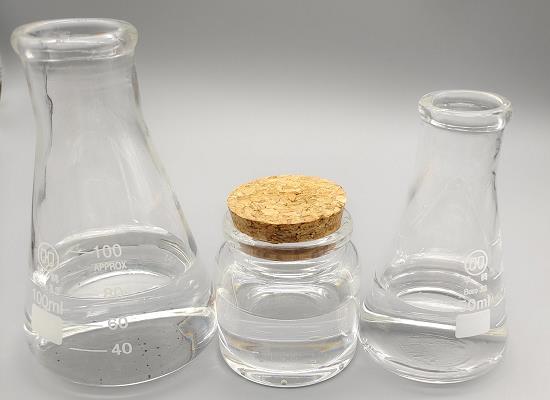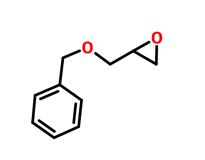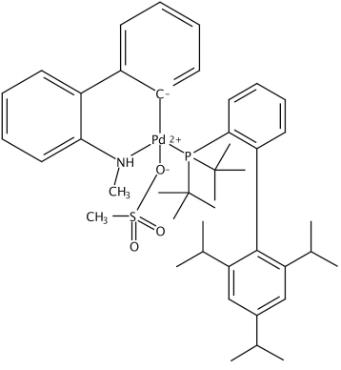1,6-hexanediol diglycidyl ether:Application, Chemistry and Toxic Studies
General Description
1,6-hexanediol diglycidyl ether with CAS No: 16096-31-4, also called hexanediol diglycidyl ether (HDGE), is an ether compound connected to ethylene oxide (oxirane) at both ends.This substance is a colourless and odourless liquid at room temperature and standard atmospheric pressure with the following physico-chemical properties: Molecular Formula: C12H22O4; Molecular weight: 230.3; Melting point:-23.7˚C; Boiling point: 328.7˚C; Flash point: 120-179˚C; Density: 1.076g/cm3; Log Pow: 0.82 at 20˚C; Vapour pressure: 0.002 mg Hg (very low volatility).In light of a number of researchers’investigation showed that the water solubility was listed as insoluble in water but the substance is registered in REACH as very soluble under ambient conditions with a solubility of 11.9g/L (ECHA, 2014). In the SciFinder chemical database the substance is reported to have solubility in water of 2.5g/L at 25 C and pH 1-10. This value has been generated by chemical modelling software. To the extent that 1,6-hexanediol diglycidyl monomer residues are migrating from epoxy coatings it will be released to the water phase as it is soluble in water.[1]
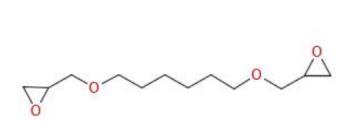
Figure 1 the molecular formula of 1,6-hexanediol diglycidyl ether
Preparation
1,6-Hexandiol diglycidyl ether was synthesized by 1,6-hexanediol,epichlorohydrin( ECH) and catalyzed by boron trifluoride-ethyl ether complex. It got the optimum technical conditions after the optimized the reaction conditions such as the amount of catalyst,ratio of raw materials,the amount of base and reaction temperature which in the stage of closed-loop reaction. The optimum technical conditions were the quality ratio of boron trifluoride-ethyl ether complex and 1,6-hexanediol was 0.08:1,the molar ratio of 1,6-hexanediol and epichlorohydrin was 1:2.1,the molar ratio of base and 1,6-eexanediol was 12.1 and reaction temperature was 45℃ which in the stage of closed-loop reaction. Based on the optimum technical conditions,the yield of 1,6-hexandiol diglycidyl ether was 99%,the purity was 51%( GC) and the epoxy value was 0.688. The best separation way of 1,6-hexandiol diglycidyl ether was the column chromatography as the research compared the separation way such as the column chromatography,vacuum distillation,extraction and simple fractionation. Based on the optimum technical synthesis conditions and separation way was the column chromatography,the yield of 1,6-hexandiol diglycidyl ether was 41. 4%,the purity was 99%( GC) and the epoxy value was 0.828. The structure of 1,6-hexandiol diglycidyl ether was confirmed1 HNMR,IR and MS.[2]1,6-hexanediol diglycidyl ether were grafted on CBFs based on the bridge effect of 3-aminopropyltriethoxysilane.[3]
Application
The dominant function of the substance is as a reactive diluent in particular related to epoxy systems. A diluent is an organic liquid added to resin formulations, with no solvent power, to reduce viscosity and to ease flow movement or to improve consistency and applicability.Most applications appears to be in the building sector e.g. plasters, fillers, sealants, coatings and paints.The result of the survey indicates that the substance probably is used in coatings of drinking water tanks and pipelines. No information was found with regards to release of residual monomers of 1,6-hexanediol diglycidyl ether from cured epoxy coatings. To the extent that monomer residues of 1,6-hexanediol diglycidyl is migrating from epoxy coatings it will be released to the water phase as it is soluble in water.[1]
1,6-hexanediol diglycidyl ether can be synthesized for 1,6-hexanediol diglycidyl ether according to the experimental results about synthesis of 1,6-hexanediol diglycidyl ether. The present paper described the method for synthesizing 1,6-hexanediol diglycidyl ether, which was the product of reacting commercial 1,6-hexanediol diglycidyl ether with commercial acrylic acid (AA). Owning to the fact that 1,6-hexanediol diglycidyl ether had some flexible ether bonds, its viscosity was medium, and it could be used to prepare the UV-curable coatings directly without adding reactive diluents. The mechanical properties of its cured film were also investigated, and the results showed that the flexibility of the cured film was superior to that of the other cured film which was prepared by using BPGEA as prepolymer of the UV-curable coating.[5]
1,6-hexanediol diglycidyl ether is one of the most efficient reactive diluents to decrease the viscosity and increase the reactivity of the well-known base monomer BADGE for cationic polymerization.[7]1,6-hexanediol diglycidyl ether as reactive diluent has an effect on thermomechanical,mechanical, and fracture mechanical properties for fiber-reinforced plastics,i.e.[8] Short-chain aliphatic epoxy resins, i.e., 1,6-hexanediol diglycidyl ether, are sometimes added to reduce viscosities and increase flexibility.[9]Kinloch and Taylor used an anhydride-cured DGEBA pretoughened with a reactive diluent (1,6-hexanediol diglycidyl ether) to be modified with a core shell toughener Type III (average particle size 500-700nm) and silica nanoparticles.[10]1,6-hexanediol diglycidyl ether without 1,6-hexanediol diglycidyl ether exhibited a much smaller improvement in fracture toughness upon modification. Kinloch et al.studied the mechanical and fracture performance of an anhydride-cured 1,6-hexanediol diglycidyl ether which contained an aliphatic epoxy (HDDGE) as well[11].
Toxicity
In several clinical studies positive patch test reactions to 1,6-hexanediol diglycidyl ether used as reactive diluent in some epoxy resin systems, in persons exposed to epoxy resin systems, tested for suspected contact sensitization, have been observed. Results of sensitization experiments (in animals) are not available. In contrast, there is yet no evidence for immediate type hypersensitivity reactions of the airways caused by the compound.[4]Among the reactive diluents, 1,6-hexanediol diglycidyl ether (1,6-HDDGE) was the most frequent allergens, with 19.5% positive reactions.[6]
Reference
[1]Pedersen G A, Cederberg T L. Survey of the occurrence of 1,6-hexanediol diglycidyl ether in food contact materials[J]: A LOUS 2012 - 2015 follow-up project. 2014.
[2]Wei H B, Hui Y U, Hong-Wei F U. Synthesis and Purificationof 1,6-Hexandiol Diglycidyl Ether with High Purity[J]. Chemical Reagents.
[3] Zhang S, Zhong T, Xu Q, et al. The effects of chemical grafting 1,6-hexanediol diglycidyl ether on the interfacial adhesion between continuous basalt fibers and epoxy resin as well as the tensile strength of composites[J]. Construction and Building Materials, 2022, 323:126563.
[4]Lessmann H. Allergens of the List of MAK and BAT values: 1,6-Hexanediol diglycidyl ether[J]. Dermatologie in Beruf und Umwelt, 2008, 56(2):57-59.
[5]Huang B, Chen W, Yang Z, et al. Synthesis of a novel UV-curable prepolymer hexanediol diglycidyl ether diacrylate and its cured film tensile property[J]. Journal of Wuhan University of Technology-Mater. Sci. Ed. 2011, 26(1):4-9.
[6]Du X, Xu P, Cong P, et al. Compatibilization and toughness modification of linear aliphatic epoxy compound on paving epoxy asphalt[J]. Materials and Structures, 2020, 53(2):1-12.
[7]Tran A D, Koch T, Knaack P, et al. Radical induced cationic frontal polymerization for preparation of epoxy composites[J]. Composites Part A: Applied Science and Manufacturing, 2020, 132: 105855.
[8]Kregl L, Wallner G M, Lang R W, et al. Effect of resin modifiers on the structural properties of epoxy resins[J]. Journal of Applied Polymer Science, 2017, 134(44): 45348.
[9]Sprenger S. (2020). Nanosilica-toughened epoxy resins.Polymers,12(8), 1777. doi:https://doi.org/10.3390/polym12081777.
[10]Carolan D, Ivankovic A,Kinloch AJ, et al.Toughening of epoxy-based hybrid nanocomposites[J]. Polymer 2016, 97, 179–190.
[11]Carolan D,Kinloch AJ,Ivankovic A, et al.Mechanical and fracture performance of carbon fibre reinforced composites with nanoparticle modified matrices[J]. Procedia Struct. Integr. 2016, 2, 96–103.
Related articles And Qustion
See also
Lastest Price from 1,6-Hexanediol diglycidyl ether manufacturers
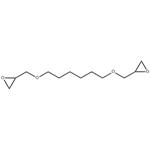
US $0.00/kg2025-10-09
- CAS:
- 16096-31-4
- Min. Order:
- 1kg
- Purity:
- 98%
- Supply Ability:
- Customise

US $0.00/kg2025-08-22
- CAS:
- 16096-31-4
- Min. Order:
- 840kg
- Purity:
- 99%
- Supply Ability:
- 35 ton/month

